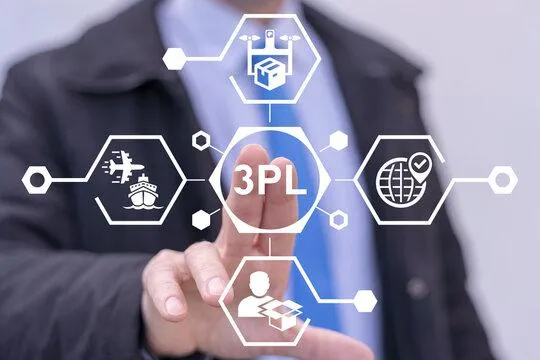3PL 101
At Trident, transparency isn’t a buzzword, it’s how we operate. Here’s a clear look at what 3PLs do and how they make your logistics simple and stress free.

Learn more about 3PLs and what they can do for you:
Want to understand how third party logistics works and what we handle here at Trident? Click on a section below to learn more, or reach out with any specific questions.
A 3PL is a specialist you hire to receive, store, pick, pack, ship, and handle returns for your products under agreed SLAs. You keep ownership of inventory and control of your customer experience; they run the physical operation to your playbook.
Fun fact, there's actually 4 different types or “parties” when it comes to logistics.
1PL is owning the space and doing it yourself. (From small Etsy shops to Walmart)
2PL is leasing space and staffing it yourself. (Most brands fall into this category)
3PL is outsourcing the warehouse work to experts. (“Hey that's us!” -Trident 3PL)
4PL adds a strategic “conductor” that orchestrates multiple warehouses and carriers across a network. (think UPS)
Companies usually partner with a 3PL when the pressure begins to build: orders are struggling to be sent on-time, error rates creep past 1%, you live in overtime during peaks, carrier cutoffs slip, or you simply have more product than space. One of your biggest indicators is when your leaders spend more time packing boxes than growing revenue. Partnering with a 3PL will free you to focus on what matters most, growing your business.
Never feel like partnering with a 3PL means sending all your inventory away to be managed by a third party. Sending only a fraction or type of your inventory to a 3PL is a great strategy. Many brands use 3PL to provide inventory relief to a scaling business, streamline efficiencies in a specific area/market, or house your overflow until you need it (great for manufacturers).
A good 3PL runs a tight, boring operation, and “boring” is exactly what you want when it comes to the complexities of supply chain. When you partnering with a reliable 3PL, you’re not just outsourcing logistics, you're creating the bandwidth to focus on your growth. Expect to see:
Warehousing that knows your SKUs: receiving to standard (ASNs, labeling), putaway by velocity, cycle counts to keep truth in your system.
Fulfillment that ships same-day on clear cutoffs: accurate picks, smart cartonization, branded inserts when needed.
Value-add when products need love: kitting, light assembly, relabels, QC photos.
Freight coordination beyond parcel: LTL/FTL booking, appointments, retail compliance.
Reverse logistics that protects margin: simple grading, RTV, and restock rules.
Data you can see: a WMS portal, EDI/API where appropriate, and weekly KPI reporting (ship-on-time %, error rate, dock-to-stock hours, aged inventory).
If your products fall under specialized CFR requirements, choose a 3PL that routinely handles that category. Look for trained staff, proper segregation, spill response capability, documented SOPs, and audit-ready records.
You’ll see a few standard categories when it comes to fees: Monthly storage, inbound, pick&pack, outbound, materials, and special projects. Most providers set a reasonable monthly minimum to hold capacity. Easiest way to ensure there are no “surprise fees” hidden, is to ask for two documents up front: a sample invoice and a pricing/definition sheet.
Many 3PLs use tiered pricing that rewards higher volume. The more products/pallets your store with them, the cheaper your rate becomes. Storage often has clear breakpoints, for example 1 to 300, 301 to 500, and 500+. Watch for monthly minimums, volume commitments, and true ups. Ask for the full tier table, how volume is measured, and how seasonal spikes or blended rates affect your tier.
How to know if the price is worth it? Compare your in-house total (labor × 1.25 for burden + space + software/equipment + error/chargeback costs) to a 3PL quote. If the 3PL is similar or lower and improves speed/accuracy, the ROI is there.
Don't rush into a new partnership, best in class onboarding takes some time, and will allow the 3PL to get to know you and your business practices.
Discovery & data: product descriptions (SKUs, barcodes, dims/weights), 12 months of orders, handling rules, forecasts, type of storage (long term, short term, cross dock, etc).
Top KPIs and your business expectations.
SOPs & SLAs: receiving standards, labeling, cutoffs, QC steps, returns grading.
Integrations: Shopify/marketplaces/EDI/API
Reporting cadence: Structure and how often reports are sent to you.
Slotting plan: 3PL maps where each SKU is stored based on velocity, fragility, segregation, and kit components.
Pilot week: small volume, measure accuracy and cycle time, adjust until seamless.
Go-live: daily reconciliations in week one; weekly reviews after.
If you are in need of expediting the onboarding process, having your documentation prepped will shave weeks off this process.
Bottom line: A 3PL is a force multiplier. You set the promises; they industrialize the follow-through. When operations start stealing hours from growth or when compliance risk keeps you up at night; hand the keys to a team that lives for accurate picks, clean counts, and on-time trucks. Keep the strategy. Keep the customer. Outsource the boredom, not the standards.
If you ship fewer than about 200 orders a month with no near-term growth, or if each order needs variable assembly or QA that changes often, keep it in-house for now. You will preserve fast feedback loops, avoid minimums and extra fees, and keep costs flexible while you stabilize your business practices.
Revisit a 3PL when peaks create overtime or missed cutoffs, when accuracy slips above one percent, or when you add channels such as DTC plus retail that require EDI and routing guides. Good readiness signals include clear SLAs, a clean item master, and predictable kitting rules.
It’s Time. Make the Shift to TRIDENT.
Enough with missed shipments and vague updates. With TRIDENT, logistics is simple, reliable, and always in your hands.

